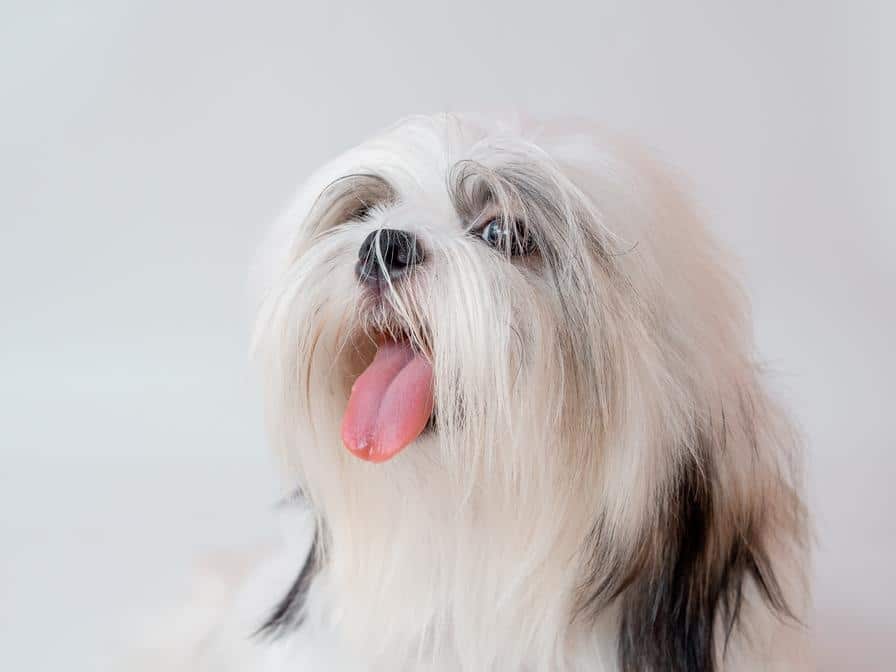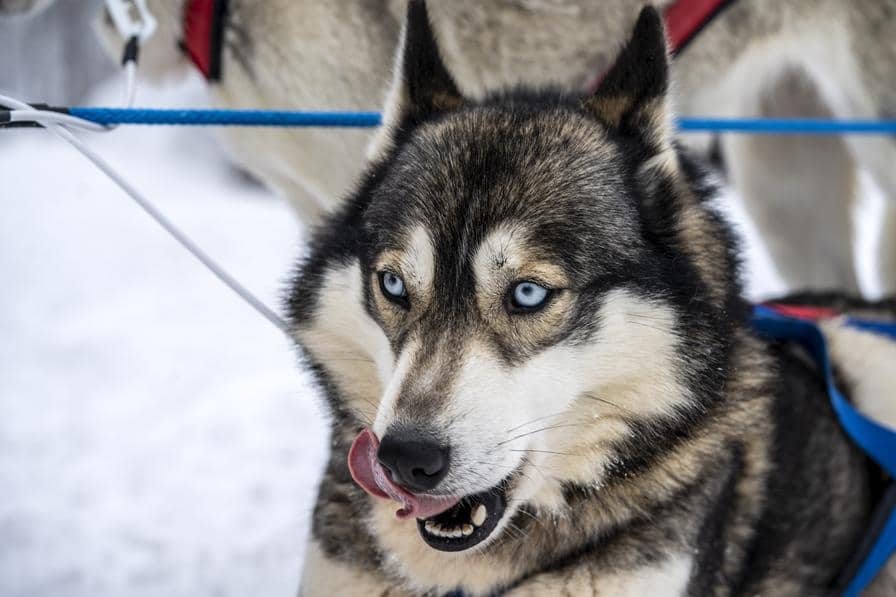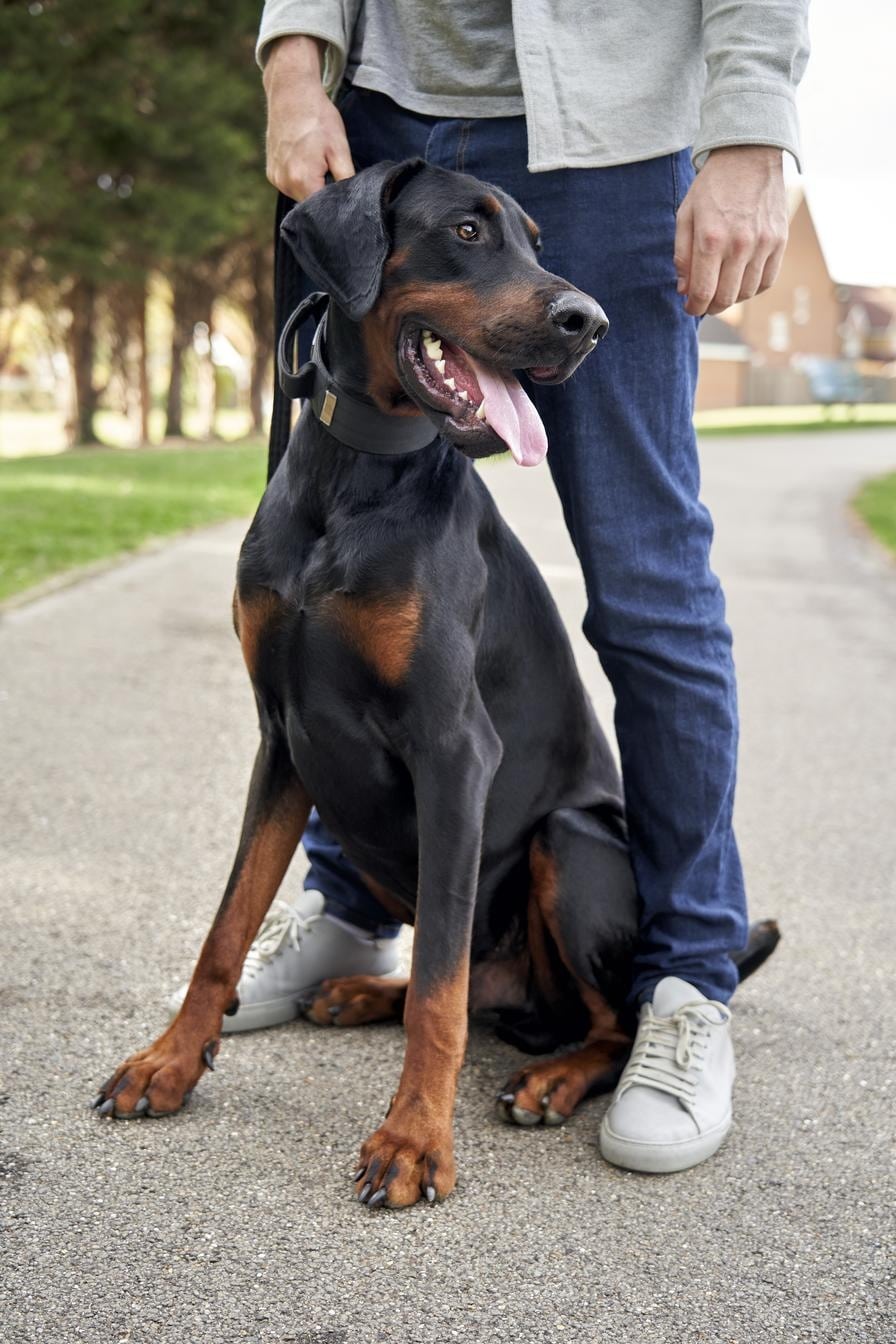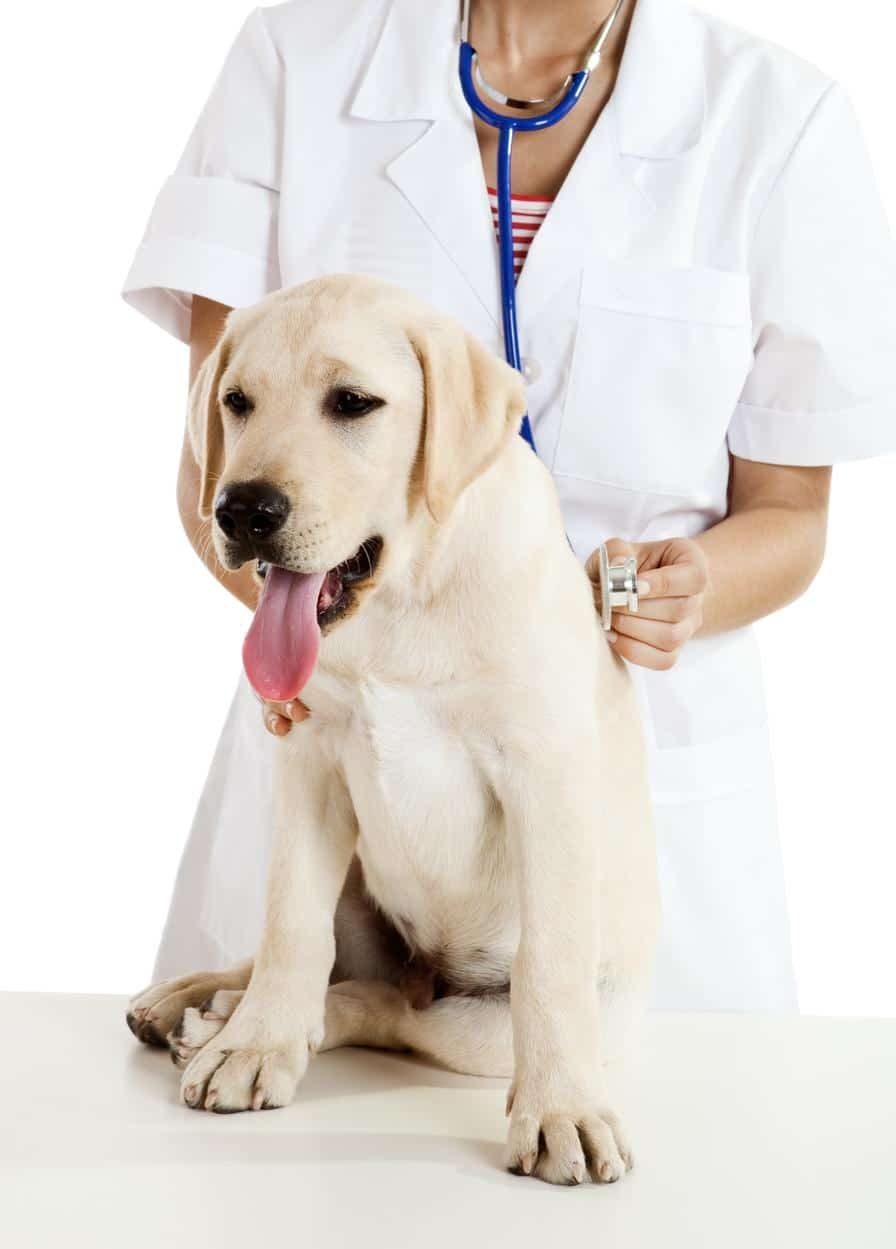12 Amazing Facts About A Dog’s Tongue You Probably Did Not Know
A dog’s tongue plays a crucial part in how it interacts with its surroundings, whether taking every last piece of food from its dish, panting after a game of fetch, or showering you with affection.
Here are some intriguing facts about dog tongues that you probably didn’t know.

Instead of sweating, dogs pant to cool off.
Dogs do not sweat as much as humans do. They only have merocrine glands, which are sweat glands located on the paw pads and noses. Dogs have apocrine glands all over their bodies, which is how humans sweat; however, these glands in dogs are primarily employed to emit smell pheromones rather than sweat.
Dogs use panting to remain cool instead of sweating. When dogs pant, air rushes over their tongues, mouths, and lungs, allowing the moisture to evaporate and cool them off. This is known as thermoregulation, and it is critical when a dog becomes overheated.
If you observe your dog panting excessively on a warm or hot day, take them somewhere cooler and give them lots of water to avoid heatstroke.

Dogs prefer the scent to taste when deciding whether or not to consume anything.
Dogs have more taste buds than cats but significantly fewer than humans. They only have about 1,700 taste buds, roughly one-sixth of what humans have (around 10,000!).
Dogs, like humans, can experience bitter, salty, sweet, and sour flavors. Still, because they lack taste buds, they rely on their sense of scent considerably more than their sense of taste when determining what to lick or eat. This is probably why dogs prefer licking our cheeks, ears, feet, and hands, which have intense tastes and scents.

The tongue of a dog usually is warm.
The typical body temperature for dogs is 101.0 to 102.5°F (38.3 to 39.2°C), therefore if your dog’s tongue seems especially warm when they kiss you, it’s because their average body temperature is 101.0 to 102.5°F (38.3 to 39.2°C).
If your dog has a fever, its tongue may feel much warmer, but this is not an accurate indicator of its body temperature. Taking a dog’s temperature by mouth is inconsistent and not always easy or safe, depending on the breed. A rectal thermometer is the most precise technique to estimate a dog’s body temperature.
If your dog pants in a chilly room, you will notice that the evaporation of their saliva from the surface of their tongue may cause their tongue to feel cool. When they stop panting, the temperature should immediately return to normal.

Not every dog has a pink tongue.
Most of us imagine a joyful, panting dog with a floppy pink tongue hanging out of its mouth. Most dogs have pink, moist-to-slobbery tongues; however, two Chinese-bred dog breeds, Chow Chows and Shar-Peis have blue or blue-black tongues. Blue-black tongues or blue-black markings on the tongues of mixed breeds are also possible.
If your dog’s tongue is usually pink, a sudden change in hue might signify a medical issue.
Heatstroke, toxin exposure, heart/lung illness, or electrical shock can all cause a purple, deep red, or even a blueish tongue.
A light pink-to-white tongue may indicate severe anemia caused by immune-mediated illness or internal bleeding.
Contact your veterinarian immediately if you detect any of these changes in your dog’s tongue.
Dogs find it relaxing to lick objects.
Licking has been found in studies to release endorphins in a dog’s brain. Endorphins are neurotransmitters that help dogs feel more relaxed and tranquil. However, licking may be a nuisance at times. If your dog licks you or itself excessively, especially during stressful situations, consult your veterinarian about potential anxiety concerns in your dog.
The lips of dogs are not cleaner than ours.
Despite common assumptions, a dog’s mouth is not cleaner than a human’s. Researchers discovered that both canines and people contain over 600 different bacteria species in their mouths.
However, while we both have typical flora in our mouths, there are germs in your dog’s mouth that do not present in yours and vice versa. Most bacteria in your dog’s mouth will not get you sick (you will not acquire the common cold by “kissing” your dog), but there are some exceptions, so remain careful and let your pup give you a cheek kiss instead!

Dog saliva will not “heal” your wounds.
Another urban legend holds that dog saliva may aid in the healing of wounds. Various ancient Greek and Egyptian societies considered dog saliva to have medicinal properties. However, while licking can remove material from a wound, lowering the risk of infection, excessive licking can harm the skin and potentially lead to more significant issues, such as hot spots.
But the ancients weren’t totally wrong—statins, proteins found in human and canine saliva, suppress infection. On the other hand, dog saliva includes germs that are common in a dog’s mouth but can cause severe infections in various human wounds.
Rather than allowing your dog to treat your wounds, adhere to more traditional methods, such as bathing with soap and water and consulting your doctor about any probable infection.
You may be allergic to a dog’s saliva rather than its dander.
It’s difficult to picture life without the companionship of dogs, yet allergies prevent 5-10% of the population from doing so. While it is commonly considered that persons with dog allergies only react to their skin dander, a small percentage of the population is really sensitive to canine saliva.
If you or a friend appear to be allergic to dogs, consult your dermatologist to determine whether the allergy is due to the dog’s dander or saliva. You might have the opportunity to adopt a puppy if you are able to avoid the tongue!

Dogs do not require rough tongues like cats.
If you’ve ever been licked by a cat, you know how different their sandpapery tongues feel from a smooth-tongued lick from a dog. But did you know that the distinction between canine and feline tongues is most likely owing to their common ancestors?
Cats have filiform papillae, which are rigid, rear-facing barbs on their tongues. When cats brush themselves, these barbs work as a comb for their fur. Most wildcats hunt alone, but many smaller species, including our tamed feline companions, are tiny enough to become prey for larger creatures. This necessitates that they maintain themselves neatly groomed in order to reduce their odor for predators.
Wild dogs, on the other hand (or stray domesticated dogs), hunt in packs and almost invariably perform the role of predator in the food chain. This reduces the importance of grooming and smell reduction; therefore, a smooth tongue suffices.
The tongues of some dogs are too lengthy for their mouths.
Macroglossia is an uncommon disorder characterized by a massive tongue. True macroglossia is most commonly seen at birth when a puppy’s tongue is too wide to latch onto a nipple and nurse correctly.
However, some dog breeds (typically short-faced types like Boxers, Pugs, and English Bulldogs) might have tongues that are too long for their mouths, causing part of their tongue to always hang out.
These dogs may have trouble eating and frequently make a massive mess in the water bowl. They may also bite their tongues accidentally while playing with toys or snapping at a reward. Extra-long tongues seldom cause medical problems, but if your dog has one, keep a watch on it for any unintentional damage or injury.

A dog’s tongue allows them to communicate and connect with its surroundings.
Dogs learn early on that their tongues are valuable instruments for talking and interacting with their surroundings. Mothers lick their puppies to clean and stimulate them as soon as they are born. In addition, mother dogs lick pups within the first few weeks of their life to encourage them to pee and defecate.
Puppies kiss their elders in wild dogs to show submissiveness but also to promote the regurgitation of food that the older pack members absorbed while hunting. Puppies lick each other to demonstrate affection and to soothe themselves and their littermates.
Dogs lick and utilize their tongues for a variety of purposes, including improving their sense of smell, communicating fear, and alleviating stomach trouble.
They use their tongues in the same manner that you use your hands to investigate their surroundings! This might entail licking everything, including humans, the floor, and even the air. Occasional, brief instances of air-licking are not a reason for concern, but you should be on the lookout for increases in licking time and/or frequency.
When your dog drinks, it can’t help but spill some.
If you’ve lived with dogs and cats, you may have observed that although cats seldom spill a drop of water when drinking, many dogs spatter water on the floor to satisfy their thirst. Why are dogs so untidy and cats so tidy?
The explanation can be found in how dogs curve their mouths when drinking. Cats and dogs both dip their tongues into water and swiftly retract them, generating a column of water that they bite and swallow. However, cats move their tongues swiftly (up to four laps per second), whereas dogs bend their tongue tip backward to spoon the water into their jaws. The larger the tongue, the larger the spoon, and the larger the shambles!

Final Thoughts About a Dog’s Tongue
More than likely, you never knew a dog’s tongue was so fascinating! In fact, you now know more about your favorite friend’s nose than you ever cared to know! It is actually pretty amazing that one simple organ is able to offer so much to the dog.
What is the one thing that you learned about a dog’s tongue that you never knew? Let us know in the comments, or let us know something about your dog’s tongue that is absolutely fascinating that we might not have covered! Now go get a great big lick from your favorite pooch and keep in mind all of these incredible facts from your favorite canine!
